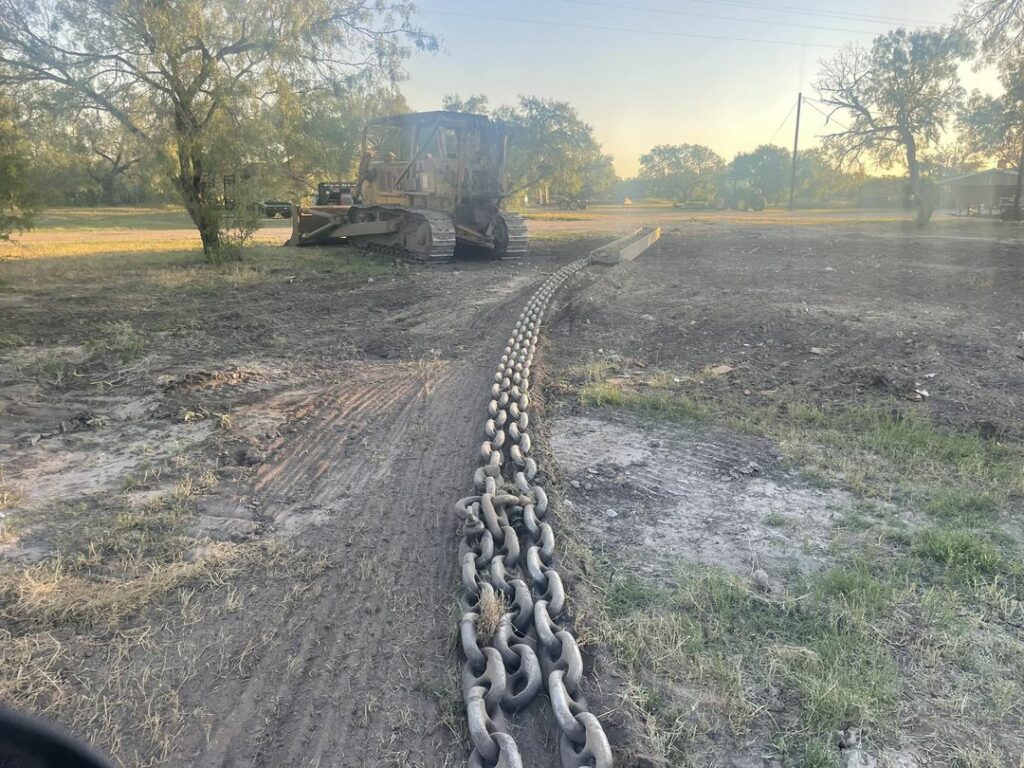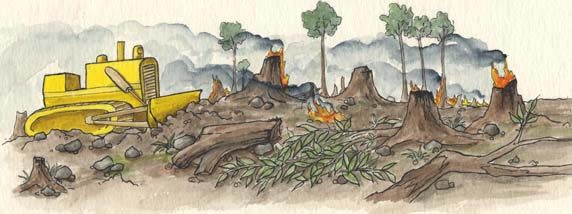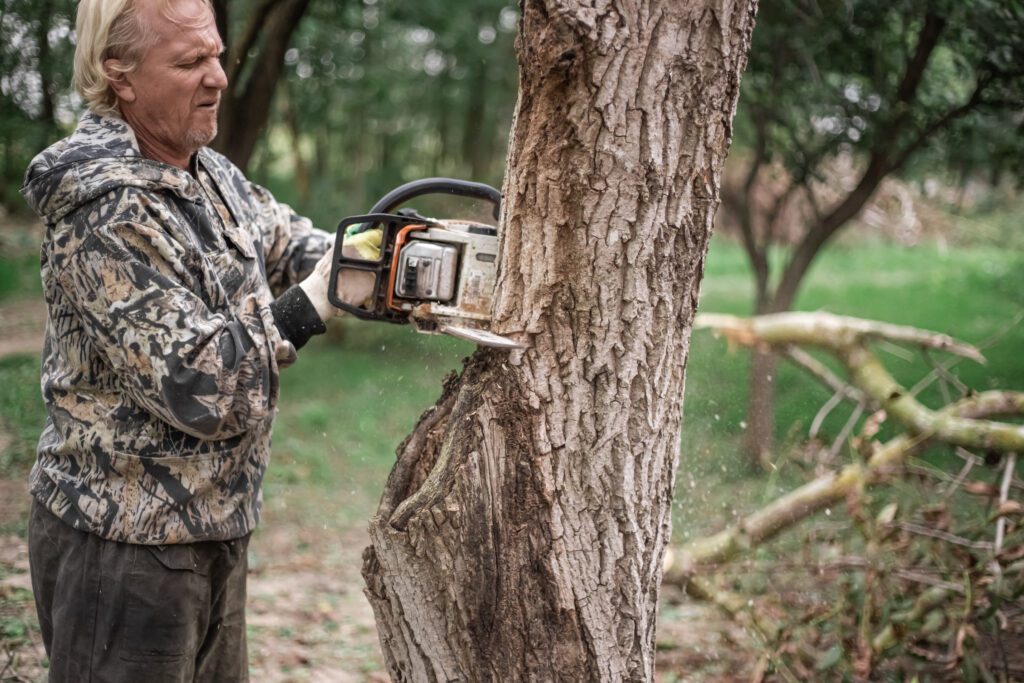If you were to Google “is land clearing sustainable?” you may feel overwhelmed by search results with bold assumptions and accusations.

At WEMULCH, we can’t help but feel a little bit defensive about some of the misinformation that we see online when it comes to land clearing and sustainability.
People are quick to label land clearing as unethical and unsustainable, when there are routes and approaches that we take that are kind to the planet and beneficial for both developers and the world.
We are intentional with protecting our planet. We take non-traditional approaches to land clearing to ensure that we are making sustainable decisions.
What land clearing methods are out there?
1. Slash and burn
Traditional land clearing methods take a “slash and burn” approach. The slash and burn approach can be a sustainable option in large forests or farmlands where people won’t be impacted—specifically in temporary deforestation methods—not so much in land clearing methods. But for smaller projects and commercial/residential areas the slash and burn method isn’t very effective. It can cause excessive amounts of smoke and releases too much carbon dioxide into the air.
Other disadvantages are:
- You are not able to selectively eliminate trees or other vegetation
- There is risk a fire that gets out of control and causes unwanted damages to property
- The heat from a fire can heat the ground to the point of sterilizing it and making it nearly impossible to grow anything for some time
- This way of clearing also eliminates all the ground cover and increases the potential for erosion
2. Railing and Chaining

Probably the most environmentally destructive option, uses a large anchor chain dragged between two enormous bulldozers to tear trees out of the ground, roots and just everything. The chain between them covers the area of land to be cleared. This allows a property owner to take down trees, shrubbery, and other obstructions quickly and efficiently. Of course all layers of soil are mixed up and all vegetation is still laying around without being cut or mixed into the soil.
3. Grubbing and Dozing
When using this style of land clearing, you can cover a lot of land at a fast pace. This quick pace, however, leaves behind large holes, which creates a rough, messy finish. This finish may be an acceptable finished product on some occasions. However, if you plan to use the land for pasturing animals or haying, you will likely need to come back and bring dirt in to fill the holes left behind.

Consequently, the speed in which you cleared is quickly negated, with the second pass needed to accomplish the finish. In the end, you will have a massive pile of material that will either need to be hauled away or burned. This additional step can be somewhat time-consuming and costly.

4. Manual clearing
While manual clearing is the least invasive, it is also the most time-consuming type of clearing. The use of hand-held equipment is very selective and targeted. This is a good option if you want to thin out a small area to build a house or other structure and create a safe buffer for fire hazards.
5. Using other methods

We would not recommend to follow this example but it is definitely one of the most exotic ways to fell a tree:
Two words: forestry mulching.
We use the forestry mulching approach.
Forestry mulching is a technique that involves cutting the brush and then grinding it into mulch. The PROs will then distribute the mulch over the ground in an even layer.
When a PRO uses forestry mulching as their methodology, the landowner is left with a fresh carpet of mulch that will decompose into rich topsoil. During the decaying process, the mulch will prevent invasive specifies from growing while allowing native plants to start growing—helping a homeowner keep the land cleared.
Forestry mulching is a single-step process that saves on haul off fees and doesn’t leave big piles of brush on landowner’s property.
The mulch biodegrades into the ground creating topsoil that nourishes the grass and trees and helps with erosion control while recycling biomass. Land mulching is a win-win situation because it provides homeowners with the opportunity to have nice-looking landscaping that they can feel good about.
When a homeowner chooses a forestry mulching approach, they can find confidence in knowing that they’re not going to contribute to erosion, that they’re assisting future growth with rich topsoil, that they’re avoiding emissions from having to transport brush, and that they’re saving time and money.
How does forestry mulching save time and money?

Forestry mulching doesn’t require large equipment to move brush, saving on both costs and time. Instead, the PROs are able to arrive at a home, clear and mulch the land, and then head out.
In traditional land clearing methods, a PRO would need to return to the site to fix up the land after it has been cleared. Of course land clearing is not a one-time job. We’re dealing with vegetation and proper maintenance will be needed as long as plants and trees are growing.

Time is money. Forestry mulching is a method that is a quicker and more cost-effective way of clearing land that also benefits the planet.
Learn more.
Land clearing is necessary for certain projects, and it doesn’t need to harm the planet. Just because a quick Google search labels land clearing as inherently harmful doesn’t mean that there aren’t sustainable ways to approach land clearing.

At WEMULCH, we take our work and our planet seriously. We are thankful that we’ve found solutions that allow us to continue doing the work we love while caring for our planet.
The land clearing industry isn’t perfect. We will continue to work towards offering sustainable services to empower people to make decisions that protect the planet.
If you’re interested in working with a PRO for your land clearing project, visit our website.
